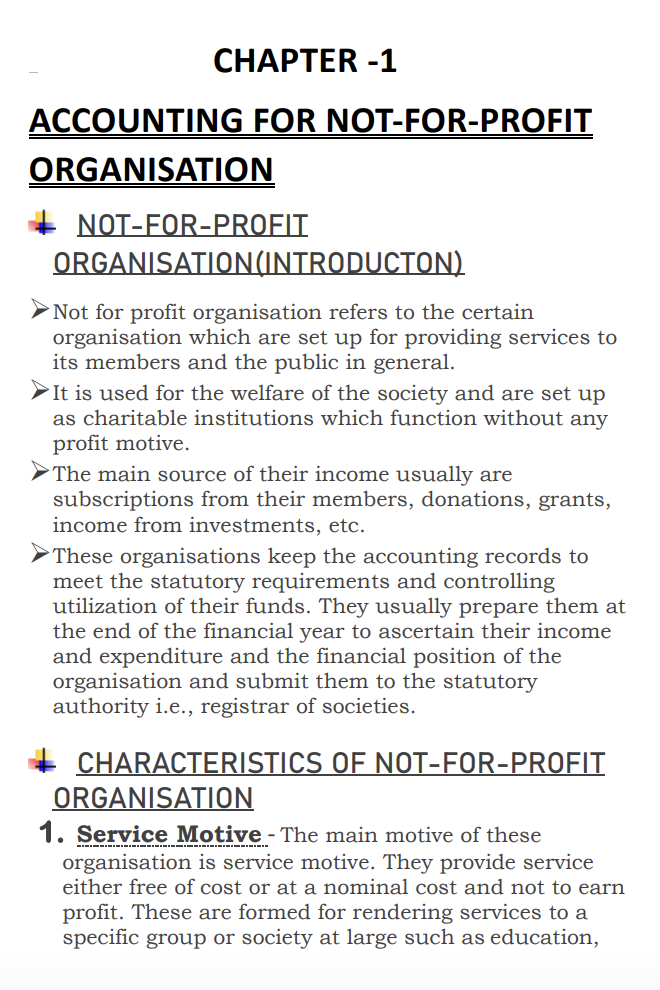Accounting in the Non-Profit Sector
Summary:
Chapter 1 of the accounting textbook discusses accounting for not-for-profit organizations. Not-for-profit organizations are established to provide services to members and the public without a profit motive. They rely on subscriptions, donations, grants, and investment income as their main sources of income. These organizations maintain accounting records to meet statutory requirements and control the utilization of their funds. The chapter highlights the characteristics of not-for-profit organizations, such as their service motive, organization structure, management by committees, and reliance on various sources of income.
The chapter explains the preparation of financial statements for not-for-profit organizations, which include a Receipts and Payments Account, Income and Expenditure Account, and Balance Sheet. The Receipts and Payments Account summarizes cash and bank transactions. In contrast, the Income and Expenditure Account functions similarly to a profit and loss account, showing revenue items and surplus or deficit. The Balance Sheet presents the organization’s financial position, including capital funds, special funds, liabilities, and assets.
The chapter also covers important items related to not-for-profit organizations, such as subscriptions, donations, legacies, life membership fees, entrance fees, sale of assets, and grants. These items are treated differently based on their nature and purpose as capital or revenue receipts. The treatment of these items impacts the presentation of financial statements and reflects the organization’s financial activities.
Excerpt:
Accounting in the Non-Profit Sector
CHAPTER -1
ACCOUNTING FOR NOT-FOR-PROFIT ORGANISATION
NOT-FOR-PROFIT ORGANISATION(INTRODUCTION)
➢Not for profit organisation refers to the certain organisation which are set up to provide services to
its members and the public in general.
➢It is used for the welfare of society and is set up as charitable institution which functions without any
profit motive.
➢The main source of their income usually are subscriptions from their members, donations, grants, income from investments, etc.
➢These organisations keep accounting records to meet the statutory requirements and control the utilization of their funds. They usually prepare them at the end of the financial year to ascertain their income
and expenditure and the financial position of the organisation and submit them to the statutory authority, i.e., the Registrar of societies.


Reviews